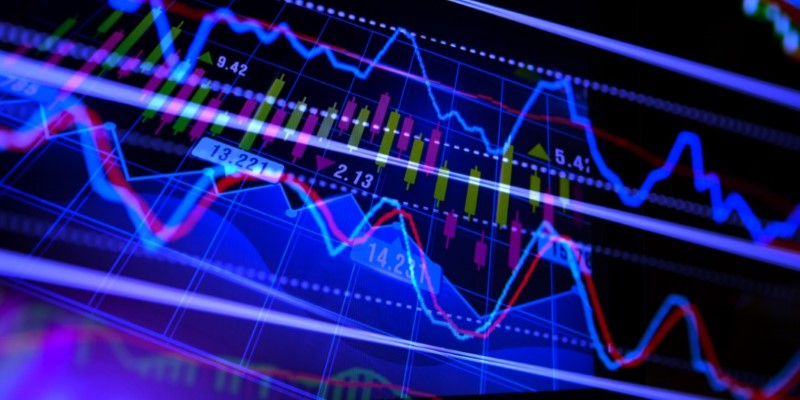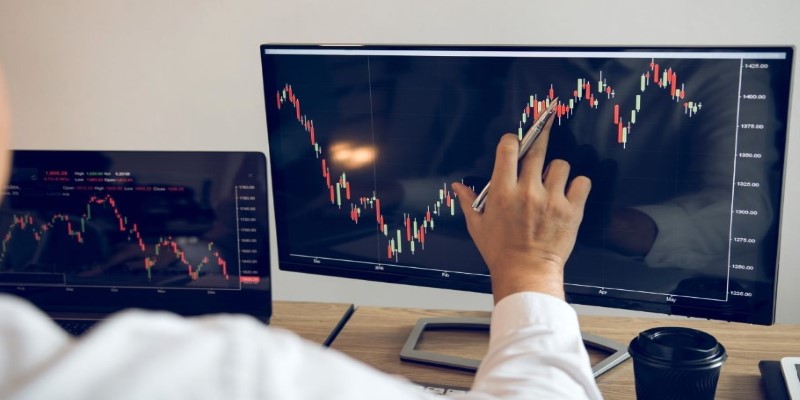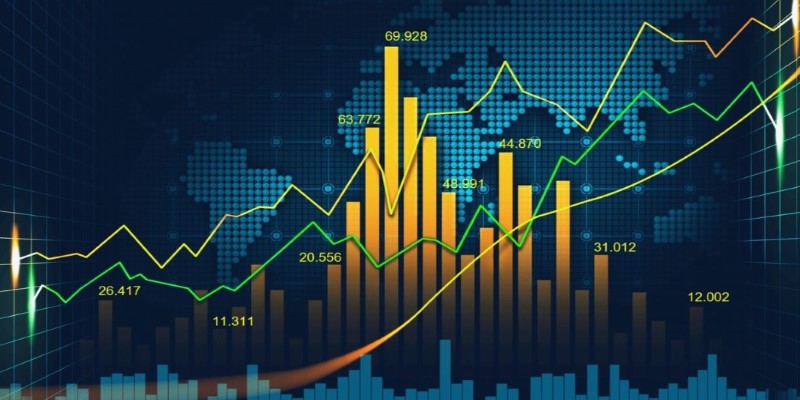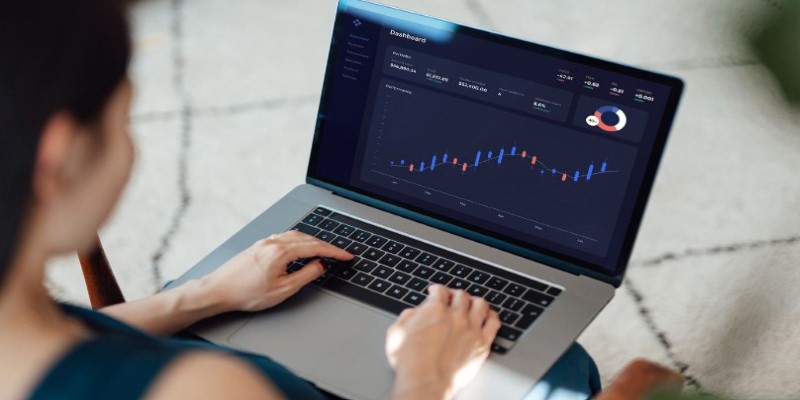Unlocking the Potential of Algorithmic Trading in Forex: An In-Depth 2024 Guide
Aug 27, 2024 By Triston Martin
Algorithmic trading in Forex is redefining how traders approach the currency markets in 2024. This advanced trading method leverages algorithms to automate buying and selling decisions, making it a highly attractive option for retail and institutional traders alike.

But what exactly does algorithmic trading in Forex entail, and how can traders tap into its potential? This article dives into the key aspects of this trading method, discussing its evolution, benefits, challenges, and what traders need to know to get started or enhance their current strategies.
What is Algorithmic Trading in Forex?
Algorithmic trading, often called "algo trading," refers to using computer algorithms to automate financial trading activities. In the Forex market, these algorithms are designed to follow predefined criteria such as timing, price, and volume. Once programmed, the algorithm executes trades automatically without the need for human intervention, allowing for lightning-fast and highly efficient trading decisions.
Algorithmic trading has been around for years, but it has gained significant traction in the Forex market due to its ability to handle vast amounts of data and execute complex strategies at high speed. With technological advancements, the accessibility of this trading method has expanded from large institutions to smaller retail traders who can now access sophisticated algorithms at a fraction of the cost.
How Algorithmic Trading Works in Forex?
Algorithmic trading in Forex relies on complex mathematical models and statistical analysis to make trading decisions. The process begins with designing or selecting an algorithm that aligns with a particular trading strategy, such as trend following, mean reversion, or arbitrage. The algorithm then monitors the market in real-time, scanning for opportunities based on the defined parameters.
When a favorable condition is metwhether it's a specific price level, technical indicator signal, or fundamental eventthe algorithm triggers a buy or sell order. The speed and precision of this process give algorithmic trading a significant advantage over manual trading, especially in a fast-paced market like Forex.
Popular Forex Algorithmic Strategies
There are several popular strategies that traders deploy through algorithms in the Forex market:
Trend-following Strategies are algorithms designed to capitalize on prolonged price movements in a specific direction. They often rely on moving averages, momentum indicators, and other trend-detection tools.
Arbitrage Strategies: Forex arbitrage takes advantage of price discrepancies between different currency pairs or trading platforms. Algorithms execute multiple trades in quick succession to profit from these tiny differences.
Market-Making Strategies: Market makers provide liquidity by placing simultaneous buy and sell orders. Algorithms enable them to profit from bid-ask spreads by automatically adjusting their quotes based on market conditions.

Mean Reversion Strategies: These strategies assume that prices will revert to their mean or average level over time. Algorithms detect when a currency pair has deviated too far from its average and place trades accordingly.
News-Based Strategies: These algorithms react to breaking news and macroeconomic events, using high-frequency trading (HFT) techniques to take advantage of market volatility.
Each of these strategies can be highly effective when executed by an algorithm, provided the parameters are carefully defined and the system is robust enough to adapt to changing market conditions.
Advantages and Risks of Algorithmic Trading in Forex
Algorithmic trading in Forex offers several compelling advantages but also comes with certain risks that traders need to be aware of. Understanding both the benefits and potential pitfalls can help traders make more informed decisions when deploying these automated strategies.
Advantages of Algorithmic Trading in Forex
Elimination of Emotional Trading: One of the primary benefits of algorithmic trading is that it removes human emotions from the trading process. Emotions like fear, greed, and hesitation often lead to impulsive decisions and can derail a trading strategy. By following predefined rules, algorithms stick strictly to the strategy, ensuring consistency and discipline.
High Speed and Efficiency: Algorithms can execute trades within milliseconds, a speed that human traders simply cannot match. In the fast-moving Forex market, where prices can change rapidly, being able to place orders instantaneously is a crucial advantage. This speed allows traders to capitalize on fleeting opportunities that may only exist for a moment.

24/7 Trading Capability: The Forex market operates 24 hours a day, five days a week. With algorithmic trading, you can have systems running continuously, even when youre asleep or unable to monitor the markets. This constant activity allows traders to capture opportunities around the clock without being physically present.
Risks of Algorithmic Trading in Forex
Market Unpredictability: While algorithms are designed to follow strict rules, the Forex market is notoriously unpredictable. Events such as economic news releases, political developments, or global crises can lead to sudden, sharp market movements. Algorithms can struggle to adapt to these events, potentially leading to significant losses.
Overfitting in Backtesting: Optimizing an algorithm during backtesting can lead to overfitting, where the algorithm performs well on historical data but fails in live trading. Overfitting happens when the algorithm is too tightly tuned to past data, making it less adaptable to real-time market conditions.
Technological Failures: Technology is at the heart of algorithmic trading, and any glitches can have serious consequences. Software bugs, internet outages, or server failures can result in missed trades, erroneous orders, or other malfunctions. To mitigate these risks, regular monitoring and updates are essential.
Conclusion
Algorithmic trading in Forex is a powerful tool that offers significant advantages for those who know how to use it effectively. While it comes with challenges such as market unpredictability, technological risks, and the complexity of development, the potential rewards make it an appealing option for both new and experienced traders.
As technology continues to advance, the scope and effectiveness of Forex algorithms are set to expand, offering new opportunities for traders willing to embrace this dynamic approach to currency trading.

What Is A Loan Modification?
Key Takeaways from South Africa's Finance Minister’s Latest Budget

Revving Up the Future: The 10-Year Extension and Upgrades to the EV Charger Tax Credit

Saving Money And Making A Budget For An Apartment

Strategies for Handling Missing Property Tax Bills: A Step-by-Step Approach

The Truth Behind Days to Cover and Short Interest: A Simple Guide

What Is a Purchase Money Mortgage and Current Investment Property Loan Rates?

Token-Based Financing and cryptocurrency

Pay Off Your Automobile Loan Early

